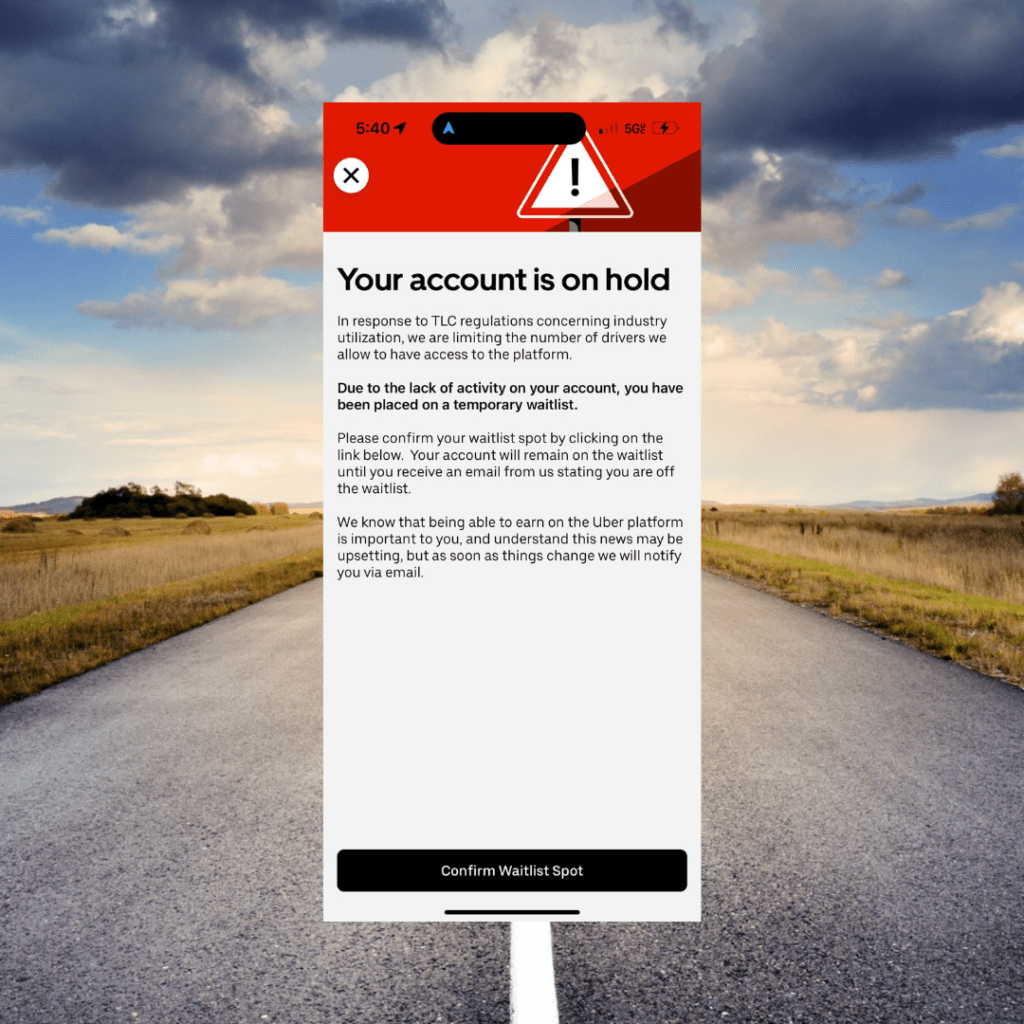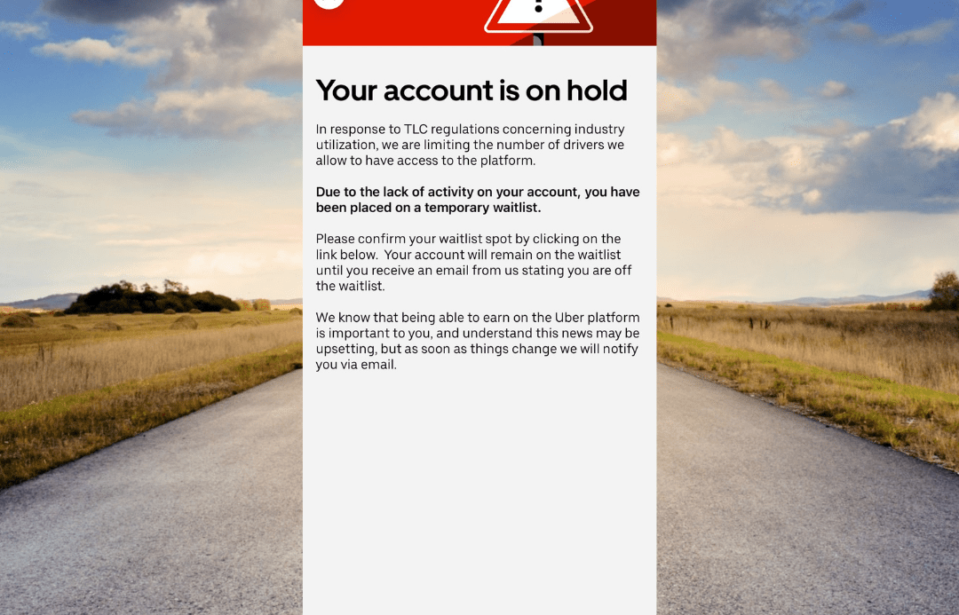In the bustling streets of New York City, Uber has become a go-to transportation option for many. The gig economy, with Uber leading the charge, promises flexibility and autonomy for those seeking to be their own bosses. However, recent developments have revealed a darker side to this seemingly attractive proposition. Uber drivers in NYC are facing a double whammy of challenges: not only are they dealing with arbitrary lockouts during slow hours, but they are also encountering unexpected account holds when they try to take a well-deserved break. In this blog post, we will delve into the experiences of these drivers, shedding light on Uber’s questionable practices and their impact.
Lockouts During Slow Hours
Let’s begin with the issue of lockouts. Uber drivers in NYC have been facing a troubling trend where they are unable to go online and accept rides during certain times of the day due to what Uber calls “lockouts.” This means that even if a driver is available and willing to work, they are locked out of the platform, losing potential income opportunities.
One driver, Alex, shared his experience: “I’ve been driving for Uber for a few years now, and the lockouts have become more frequent. During certain hours, especially in the afternoons, I’m locked out and can’t accept any rides. It’s frustrating because those are usually the slower times, and I could really use the extra income.”
The Vacation Conundrum

Now, let’s turn our attention to Uber’s vacation hold policies. Meet Robert, a dedicated Uber driver in NYC who has been with the platform for half a decade. Like anyone, Robert values his work-life balance and occasionally needs a break from the demanding nature of his job. So, when he decided to take an extended vacation to spend quality time with his family, he expected a seamless process for resuming his driving duties upon his return. Unfortunately, Robert was in for a shock.
The Unexpected Hurdle: Account on Hold
As Robert attempted to reactivate his Uber account after his rejuvenating vacation, he was confronted with a significant roadblock. His account had been placed on hold, preventing him from going online and accepting rides. Perplexed, he immediately reached out to Uber’s support team, only to receive a vague response citing Taxi and Limousine Commission (TLC) regulations as the reason for the hold. Robert was informed that due to his prolonged absence from the platform, Uber was required to enforce this measure.
The Impact: Financial Uncertainty
The consequences of Uber’s actions went beyond mere inconvenience. Robert, who relied on his Uber income to make ends meet, suddenly found himself facing financial uncertainty. “It felt like I was being punished for taking a much-needed break,” he shared, expressing his frustration. “Being locked out from driving has put a strain on my livelihood. I’m worried about how I’ll make up for the lost income.”
A Pattern Emerges
Robert’s story is not unique. Numerous other Uber drivers in NYC have come forward with similar experiences. It appears that taking extended vacations often results in accounts being placed on hold for undefined periods upon their return. This leaves drivers in a state of limbo, unable to resume work and earn an income.
Sarah, another affected driver, shared her ordeal: “I took a two-month sabbatical to travel and recharge. When I tried to reactivate my account, Uber put me on hold, citing inactivity. It’s frustrating because I had no idea that taking a break would result in being locked out of my primary source of income.”
The Search for Transparency
Drivers are demanding transparency and clear explanations from Uber regarding these hold policies. In online forums and support groups, they exchange stories and seek answers. Many question the validity of Uber’s claims, wondering if these holds are truly mandated by TLC regulations or if Uber is using them as a convenient excuse to control their workforce.
Uber’s Response
In response to the concerns raised by drivers, Uber has cited the TLC’s utilization rate (UR) rules. According to Uber, the industry-wide UR metric has been below the required 53% floor, and they attribute this to their competitor, Lyft, not keeping their drivers busy enough. Uber claims that they are forced to limit access to their platform (“lockouts”) to comply with these regulations.
The Way Forward: Advocating for Change
Confronted with these unfair practices, drivers are uniting and advocating for change. They are calling for clearer and more flexible guidelines that take into account their needs as independent contractors. “We understand that Uber needs to manage its active driver pool,” shared a concerned driver, “but the lockouts and vacation holds are excessive and disruptive to our livelihoods. There should be a better system that doesn’t penalize us for taking time off or driving during slower hours.”
Conclusion
Uber’s response to slow hours and drivers taking vacations in NYC highlights the precarious nature of gig work. While Uber touts flexibility, drivers face financial uncertainty and unexpected hurdles. It is imperative that Uber reevaluates its practices, prioritizes the well-being of its driver community, and works collaboratively with drivers to find solutions. Only then can the gig economy truly deliver on its promise of flexibility and independence. Until then, drivers must continue to navigate these challenges, standing together to demand fair and equitable treatment from Uber and the gig economy at large.





Leave a comment